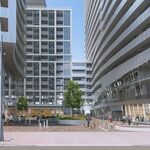BurlOak
Senior Member
Does this count as Rail Deck Park II.?
City looking to create new greenspace over midtown subway
I thought the key to these types of parks is to allow some development to create money to pay for the project. I don't think that could happen up near Eglinton. Maybe closer to Rosedale they could develop some parkland (i.e. Budd Sugarman Park) in exchange for creating parkland over top of the subway.
City looking to create new greenspace over midtown subway
I thought the key to these types of parks is to allow some development to create money to pay for the project. I don't think that could happen up near Eglinton. Maybe closer to Rosedale they could develop some parkland (i.e. Budd Sugarman Park) in exchange for creating parkland over top of the subway.




